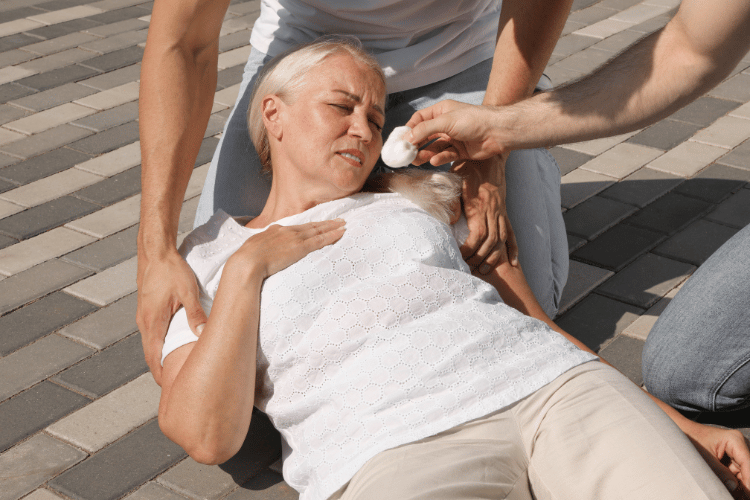
Heat-related illnesses like heat exhaustion, heat stroke, and heat cramps can occur when the body is exposed to high temperatures for extended periods. These conditions range in severity, with heat stroke being a life-threatening emergency. In this blog, we’ll discuss the symptoms, causes, and prevention of heat-related illnesses to help you stay safe and healthy during hot weather.
Understanding Heat-Related Illness
Heat-related illnesses encompass a spectrum of conditions resulting from prolonged exposure to high temperatures, often accompanied by dehydration. These conditions range from mild heat cramps to severe heat stroke, each posing unique risks to health. Understanding these illnesses is crucial, especially during hot weather or in environments where heat exposure is unavoidable. By recognizing the symptoms early and taking preventive measures, individuals can avoid serious health complications.Definition of Heat Exhaustion and Heat Stroke
Heat exhaustion and heat stroke are two of the most severe forms of heat-related illnesses. Heat exhaustion occurs when the body loses excessive water and salt through sweating, leading to symptoms such as heavy sweating, fatigue, dizziness, and nausea. It is often triggered by physical activity in hot environments and can escalate if not addressed promptly. Heat stroke, on the other hand, is a life-threatening condition that occurs when the body's temperature regulation system fails. This leads to a rapid rise in core body temperature, often exceeding 104°F (40°C). Symptoms include confusion, loss of consciousness, and the absence of sweating despite the heat. Immediate medical attention is critical for heat stroke, as it can cause organ damage or even death if untreated.Overview of Heat Cramps
Heat cramps are the mildest form of heat-related illness and often serve as an early warning sign of more severe conditions. These painful muscle spasms typically occur in the legs, arms, or abdomen and are caused by the loss of electrolytes and fluids through excessive sweating. While heat cramps are not life-threatening, they can be debilitating and indicate the need for rest, hydration, and electrolyte replenishment. Ignoring these cramps can lead to more severe heat-related illnesses, making it essential to address them promptly.Importance of Recognizing Symptoms of Heat-Related Illness
Recognizing the symptoms of heat-related illnesses is vital for preventing their progression. Early signs, such as excessive sweating, muscle cramps, and fatigue, can often be managed with simple interventions like hydration and rest. However, more severe symptoms, including confusion, rapid heartbeat, and dry skin, require immediate medical attention. By staying vigilant and understanding these warning signs, individuals can protect themselves and others from the dangers of heat-related illnesses. This is especially important for vulnerable populations, such as the elderly, children, and those with pre-existing health conditions, who are at a higher risk of complications.Symptoms of Heat-Related Illness
Heat-related illnesses manifest through a variety of symptoms, ranging from mild discomfort to severe health emergencies. Recognizing these signs early can prevent the condition from worsening and ensure timely intervention. Each type of heat-related illness presents distinct symptoms, which are important to understand for effective management and prevention.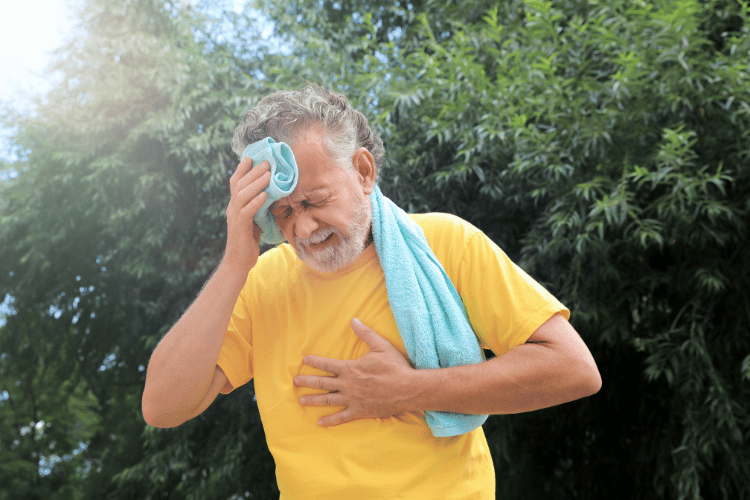
Common Symptoms of Heat Exhaustion
Common Symptoms of Heat Exhaustion
Heat exhaustion is often characterized by a combination of physical and mental symptoms that result from the body struggling to cool itself. Individuals may experience excessive sweating, which is the body’s natural response to overheating. This is often accompanied by pale, clammy skin and a feeling of extreme fatigue or weakness. Other symptoms include dizziness, headache, and nausea, which can escalate to vomiting if the condition persists. In some cases, individuals may also notice muscle cramps or a rapid, weak pulse. These signs indicate that the body is losing essential fluids and electrolytes, which are critical for maintaining normal bodily functions. If left untreated, heat exhaustion can progress to more severe conditions, making it essential to address these symptoms promptly by moving to a cooler environment, hydrating, and resting.Identifying Symptoms of Heat Stroke
Heat stroke is a medical emergency that requires immediate attention. Unlike heat exhaustion, which is often accompanied by sweating, heat stroke typically presents with dry, hot skin due to the body’s inability to regulate its temperature. A key symptom is a sudden and significant rise in body temperature, often exceeding 104°F (40°C). This can lead to confusion, disorientation, or even loss of consciousness. Other warning signs include a rapid, strong pulse and difficulty breathing. In severe cases, seizures or organ failure may occur, underscoring the critical nature of this condition. Recognizing these symptoms early and seeking emergency medical care can be life-saving, as heat stroke can cause irreversible damage if not treated immediately.Symptoms of Heat Cramps
Heat cramps are the mildest form of heat-related illness but should not be ignored. These painful muscle spasms typically occur in the legs, arms, or abdomen and are often triggered by intense physical activity in hot conditions. The cramps are caused by the loss of sodium and other electrolytes through excessive sweating, which disrupts the balance needed for proper muscle function. While heat cramps are not life-threatening, they can be a precursor to more severe conditions, such as heat exhaustion or heat stroke. Individuals experiencing these symptoms should stop physical activity, hydrate with water or electrolyte-rich fluids, and rest in a cool environment to prevent further complications.Causes of Heat Exhaustion and Heat Stroke
Heat exhaustion and heat stroke are serious conditions that arise from the body’s inability to regulate its temperature effectively. These illnesses are often triggered by a combination of internal and external factors that place excessive stress on the body’s cooling mechanisms. Understanding these causes can help individuals take preventive measures and reduce the risk of heat-related complications.Factors Leading to Heat-Related Illness
Several factors contribute to the development of heat-related illnesses, including prolonged exposure to high temperatures and engaging in strenuous physical activities in hot environments. When the body is exposed to extreme heat for extended periods, its natural cooling processes, such as sweating, may become overwhelmed. This is particularly true in humid conditions, where sweat does not evaporate efficiently, reducing the body’s ability to cool down. Other contributing factors include wearing heavy or non-breathable clothing, which traps heat and prevents proper ventilation. Additionally, certain medical conditions, such as heart disease or obesity, can impair the body’s ability to regulate temperature. Medications like diuretics or antihistamines may also increase susceptibility to heat-related illnesses by affecting hydration levels or heat tolerance.The Role of Dehydration in Heat Illness
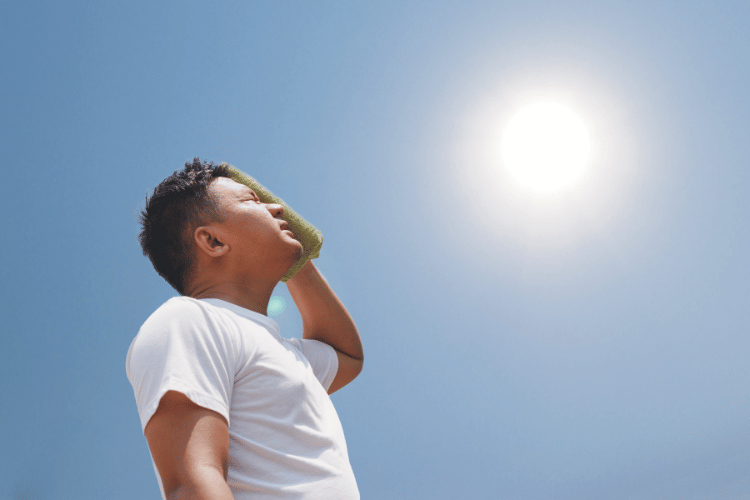 Dehydration plays a crucial role in the onset of heat-related illnesses, as it directly affects the body’s ability to regulate its own temperature. When the body loses more fluids than it takes in, it becomes harder to produce sweat, which is essential for temperature regulation. This fluid imbalance can lead to a rapid rise in core body temperature, increasing the risk of heat exhaustion and heat stroke.
In addition to impairing the cooling process, dehydration can cause a range of symptoms, including fatigue, dizziness, and muscle cramps. These symptoms not only make it difficult to continue physical activity but also serve as warning signs of more severe heat-related conditions. Staying hydrated by drinking water or electrolyte-rich fluids is one of the most effective ways to prevent dehydration and its associated risks.
Dehydration plays a crucial role in the onset of heat-related illnesses, as it directly affects the body’s ability to regulate its own temperature. When the body loses more fluids than it takes in, it becomes harder to produce sweat, which is essential for temperature regulation. This fluid imbalance can lead to a rapid rise in core body temperature, increasing the risk of heat exhaustion and heat stroke.
In addition to impairing the cooling process, dehydration can cause a range of symptoms, including fatigue, dizziness, and muscle cramps. These symptoms not only make it difficult to continue physical activity but also serve as warning signs of more severe heat-related conditions. Staying hydrated by drinking water or electrolyte-rich fluids is one of the most effective ways to prevent dehydration and its associated risks.
Environmental Factors Contributing to Heat Cramps
Heat cramps are often triggered by environmental conditions that promote excessive sweating and fluid loss. High temperatures, combined with intense physical activity, create the perfect storm for the development of these painful muscle spasms. Humidity further exacerbates the problem by reducing the evaporation of sweat, making it harder for the body to cool down. Other environmental factors, such as direct exposure to sunlight or working in poorly ventilated spaces, can also increase the likelihood of heat cramps. These conditions accelerate the loss of electrolytes, such as sodium and potassium, which are essential for proper muscle function. To minimize the risk, individuals should take regular breaks in shaded or air-conditioned areas, wear lightweight clothing, and replenish lost fluids and electrolytes.Preventing Heat Exhaustion and Heat Stroke
Taking proactive steps to prevent heat-related illnesses is essential, especially during periods of extreme heat or when engaging in outdoor activities. By adopting effective strategies and staying vigilant for early warning signs, individuals can significantly reduce the risk of heat exhaustion and heat stroke.Strategies to Prevent Heat Exhaustion
Preventing heat exhaustion begins with minimizing exposure to high temperatures and ensuring the body remains cool. One effective strategy is to schedule outdoor activities during cooler parts of the day, such as early morning or late evening. Wearing lightweight, loose-fitting clothing made from breathable fabrics like cotton can also help the body stay cool by allowing air circulation. Using cooling aids, such as fans, damp towels, or portable misting devices, can further enhance the body’s ability to regulate temperature. Additionally, taking frequent breaks in shaded or air-conditioned areas is crucial, especially during prolonged physical activity. For those working outdoors, rotating tasks and sharing workloads can help prevent overexertion in the heat.Warning Signs to Watch For
Recognizing the early warning signs of heat-related illnesses is critical for preventing their progression. Symptoms such as excessive sweating, fatigue, and dizziness may indicate the onset of heat exhaustion. If these signs are ignored, they can escalate to more severe symptoms, including confusion, rapid heartbeat, and dry skin, which are hallmarks of heat stroke. It’s important to act quickly when these symptoms appear. Moving to a cooler environment, hydrating, and resting can often reverse the effects of heat exhaustion. However, if symptoms persist or worsen, seeking medical attention is essential to prevent life-threatening complications.Tips for Staying Hydrated
Staying hydrated is one of the most effective ways to prevent heat-related illnesses. Drinking water regularly, even when not feeling thirsty, helps maintain the body’s fluid balance. For individuals engaging in intense physical activity or spending extended periods in the heat, consuming electrolyte-rich beverages can replenish lost minerals like sodium and potassium. Avoiding drinks that dehydrate the body, such as alcohol and caffeinated beverages, is equally important. These substances can exacerbate fluid loss and increase the risk of dehydration. Carrying a reusable water bottle and setting reminders to drink water throughout the day can help ensure consistent hydration, especially in hot weather.Treatment Options for Heat-Related Illness
Prompt and appropriate treatment is essential for managing heat-related illnesses and preventing them from escalating into life-threatening conditions. Each type of heat-related illness requires specific interventions, ranging from basic first aid to emergency medical care. Understanding these treatment options can make a significant difference in outcomes.First Aid for Heat Exhaustion
Heat exhaustion can often be managed effectively with immediate first aid measures. The first step is to move the affected individual to a cooler environment, such as a shaded area or an air-conditioned room. Removing excess clothing and applying cool, damp cloths to the skin can help lower body temperature. If possible, use a fan to enhance the cooling effect. Hydration is critical for recovery. Encourage the individual to drink water or an electrolyte-replenishing beverage in small, frequent sips. Avoid giving drinks that contain caffeine or alcohol, as these can worsen dehydration. Rest is equally important, as it allows the body to recover from the stress of overheating. If symptoms persist for more than an hour or worsen, seek medical attention immediately.Emergency Measures for Heat Stroke
Heat stroke is a medical emergency that requires immediate action to prevent severe complications or death. The first priority is to call emergency services. While waiting for help to arrive, move the individual to a cooler location and remove excess clothing to facilitate heat dissipation. Rapid cooling is essential—apply cold packs to areas with large blood vessels, such as the neck, armpits, and groin. If cold packs are unavailable, use any available method to cool the body, such as immersing the individual in a tub of cool water or spraying them with a garden hose. Avoid giving fluids if the person is unconscious or unable to swallow, as this can lead to choking. Continuous monitoring of the individual’s condition is crucial until professional medical help arrives.Managing Heat Cramps Effectively
Heat cramps, while less severe than other heat-related illnesses, still require attention to prevent further complications. The first step is to stop any physical activity and rest in a cool environment. Gently stretching and massaging the affected muscles can help relieve the spasms. Hydration is key—drink water or a sports drink containing electrolytes to replenish lost fluids and minerals. To prevent recurrence, avoid resuming strenuous activities until the cramps have completely subsided. If the cramps persist for more than an hour or are accompanied by other symptoms, such as nausea or dizziness, seek medical advice. These measures not only alleviate discomfort but also reduce the risk of progression to more serious heat-related conditions.Frequently Asked Questions
Q: What are the common symptoms of heat exhaustion?
A: Common signs of heat exhaustion include excessive sweating, elevated body temperature, muscle cramps, and fatigue. Additional symptoms may include dizziness, nausea, and fainting. Recognizing these early warning signs is critical to preventing the condition from escalating into heat stroke.
Q: How does high body temperature contribute to heat exhaustion?
A: Heat exhaustion occurs when the body’s cooling mechanisms are overwhelmed, causing a significant rise in core temperature. This is especially common during intense physical activity or in humid conditions, where sweat evaporation is less effective at cooling the body.
Q: What should I do if someone shows signs of heat exhaustion?
A: If someone exhibits symptoms of heat exhaustion, act quickly to cool their body. Move them to a shaded or air-conditioned area, provide cool water or an electrolyte drink, and apply damp cloths to their skin. If their condition does not improve or worsens, seek medical attention immediately.
Q: What are the key differences between heat exhaustion and heat stroke?
A: Heat exhaustion is a less severe condition caused by prolonged exposure to heat and dehydration, while heat stroke is a life-threatening emergency. Heat stroke occurs when the body’s temperature exceeds 104°F (40°C) and can result in confusion, slurred speech, or unconsciousness. Immediate medical care is essential for heat stroke.
Q: Who is most at risk for heat-related illnesses?
A: Older adults, particularly those over 65, young children, and individuals taking certain medications or with pre-existing health conditions are more vulnerable to heat-related illnesses. These groups should take extra precautions during heat waves or extreme temperatures to stay safe.
Q: What are the early warning signs of heat-related illnesses?
A: Early indicators of heat-related illnesses include heavy sweating, elevated body temperature, headaches, confusion, and muscle cramps. Identifying these symptoms early can help prevent the condition from worsening into heat stroke.
Q: How can I prevent heat exhaustion during extreme heat?
A: To avoid heat exhaustion during a heat wave, stay hydrated by drinking plenty of water or electrolyte-rich beverages, wear loose and breathable clothing, and limit outdoor activities during peak heat hours. Spending time in air-conditioned spaces can also help reduce the risk.
Q: Why is hydration important in preventing heat-related illnesses?
A: Staying hydrated is essential for maintaining the body’s ability to regulate temperature. Dehydration, caused by excessive sweating, can impair the body’s cooling mechanisms and increase the likelihood of heat exhaustion. Regularly drinking fluids helps prevent this imbalance.
Q: What are heat cramps, and how do they relate to heat exhaustion?
A: Heat cramps are painful muscle spasms that often occur during intense physical activity in hot conditions. They are an early warning sign that the body is struggling to cope with heat and may lead to heat exhaustion if not addressed with rest, hydration, and cooling.
Q: When should I seek medical attention for heat exhaustion?
A: Seek medical help immediately if symptoms of heat exhaustion persist despite cooling efforts or if the individual experiences confusion, slurred speech, or unconsciousness. These could indicate the onset of heat stroke, which requires emergency treatment.
Conclusion
Understanding the symptoms and causes of heat-related illnesses is crucial for preventing and responding to them in a timely manner. Whether it’s heat cramps, heat exhaustion, or heat stroke, recognizing the warning signs can save lives. Stay hydrated, avoid prolonged heat exposure, and take proactive steps to protect yourself and others from heat-related health risks.



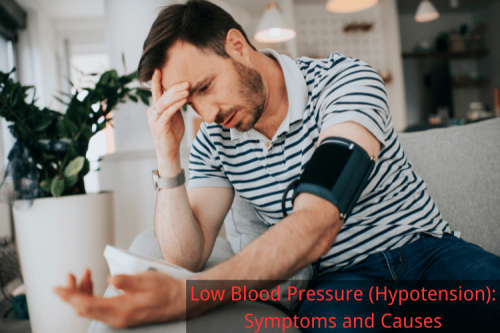
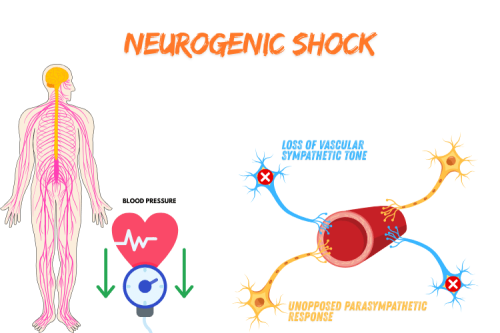
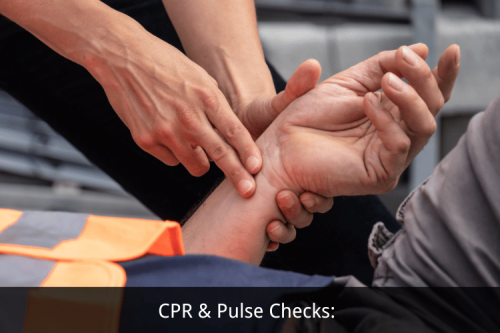
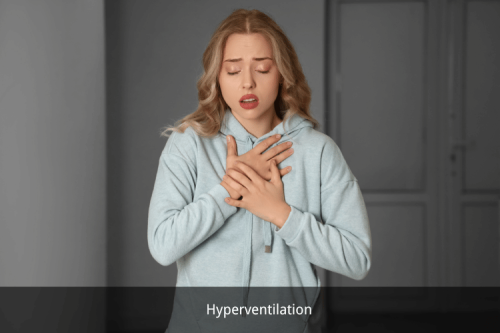
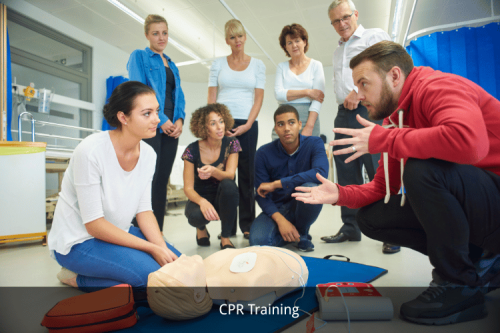
 Login with Google
Login with Google Login with Facebook
Login with Facebook